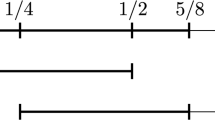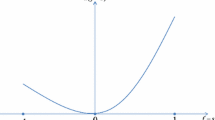Abstract
The paper studies strategy-proof cost sharing rules for public good provision based on referenda with different threshold quotas. By appropriately relaxing the assumptions of individual rationality and anonymity we provide a complete characterization of the family of quota rules with (possibly) unequal pricing. We prove that these quota rules are the only cost sharing rules satisfying four conditions: strategy-proofness, non-bossiness, weak continuity and weak anonymity. In addition, the specification of the degree to which individual rationality may be violated results in the selection of a specific “quota” for the referendum. While all these rules are “almost” always efficient when providing the public good and they are also almost everywhere coalitionally strategy-proof, only one family of rules from this class satisfies these two properties everywhere. The rules satisfying these two properties are Moulin’s Conservative Equal Costs Rule and unequal cost sharing variants of Moulin’s rule.
Similar content being viewed by others
References
Bliss C, Nalebuff B (1984) Dragon-slaying and Ballroom-dancing: the private supply of a public good. J Public Econ 25: 1–12
Clarke E (1971) Multipart pricing of public goods. Public Choice 11: 17–33
Deb R, Razzolini L (1999) Auction-like mechanisms for pricing excludable public goods. J Econ Theory 37: 340–368
Deb R, Razzolini L, Seo TK (2006) The conservative equal costs rule, the serial cost sharing rule and the pivotal mechanism: asymptotic welfare loss comparisons for the case of an excludable public project. Rev Econ Des 10(3): 205–232
Green J, Laffont JJ (1979) Incentives in public decision making. North-Holland, Amsterdam
Groves T (1973) Incentives in teams. Econometrica 41: 617–663
Groves T, Ledyard J (1977) Optimal allocation of public goods: a solution to the free rider problem. Econometrica 45: 783–809
Ledyard J, Palfrey T (2002) Approximation of efficient public good mechanisms by simple voting schemes. J Public Econ 83(2): 153–171
Maniquet F, Sprumont Y (2004) Fair production and allocation of an excludable and nonrival good. Econometrica 72: 627–640
Matsusaka JG (2005) The eclipse of legislatures: direct democracy in the 21st century. Public Choice 124: 157–177
Moulin H (1994) Serial cost sharing of excludable public goods. Rev Econ Studies 61: 305–325
Ohseto S (2005) Augmented serial rules for an excludable public good. Econ Theory 26(3): 589–606
Palfrey T, Rosenthal H (1984) Participation and provision of a discrete public good: a strategic analysis. J Public Econ 24: 171–193
Satterthwaite M, Sonnenschein H (1981) Strategyproof allocation mechanisms at differentiable points. Rev Econ Studies 48: 587–597
Author information
Authors and Affiliations
Corresponding author
Rights and permissions
About this article
Cite this article
Deb, R., Seo, T.K. Strategy-proofness and public good provision using referenda based on unequal cost sharing. Int J Game Theory 39, 223–236 (2010). https://doi.org/10.1007/s00182-009-0192-3
Accepted:
Published:
Issue Date:
DOI: https://doi.org/10.1007/s00182-009-0192-3




